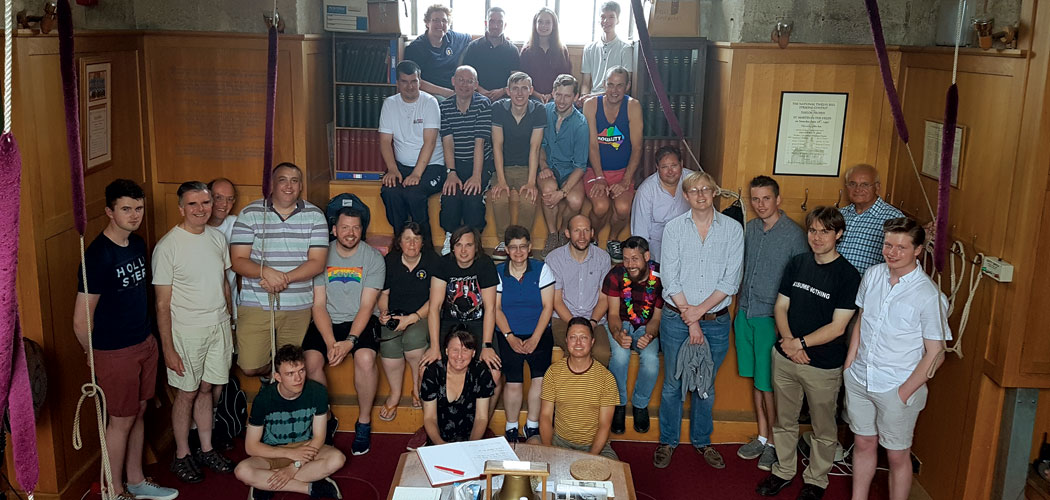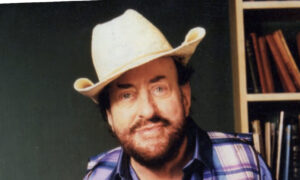Christmas time means church bells will be ringing out across the country this week – but did you know there is an LGBT bellringing group? Dickon Love from the Friends of Dorothy Society explains the joys of campanology.

How many of you have stood in Trafalgar Square on London Pride day and noticed bells ringing from the church behind you? The church, which proudly flies the rainbow flag, is St Martin-in-the-Fields, and no, there isn’t a wedding going on, but the bells are being rung especially for the occasion by LGBT bellringers gathered from all over the country.
The fancy name for church bellringing is campanology, although we ringers just prefer to call it bellringing. It involves pulling on a rope to swing a bell from its balance point where it is mouth up, through 360 degrees to pause it at the balance point again, then pulling again to bring it back round in the other direction.
These bells can be very big (the largest in Trafalgar Square is 1½ tons) and it takes skill rather than brawn to complete this action as the rope flies 5 metres through the air up and down. The next skill is to ring your bell correctly in relation to everyone else’s, whether it is ringing the bells in scale from top to bottom, or changing the order on each cycle. Learning the different permutations – known as ‘changes’ – is like learning different dances, and there is an endless menu of these to amuse the brain.
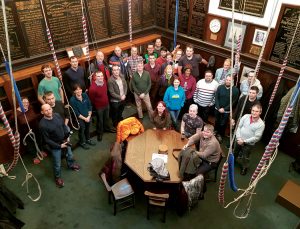
The tradition of LGBT ringing at London Pride started in 1991 when John Adams put an advertisement in ‘The Ringing World’ (yes, there really is a weekly newspaper for bellringers!) appealing for bellringers to come to St Martin’s. Since then, the Friends of Dorothy Society (FODS ) as it became known as, has rung for every London Pride since then.
In the main, bells hang in church towers, but bellringers are not necessarily churchgoers. Ringers are attracted as they would to any other hobby or sport rather than seek a Christian activity, although their skills are offered to the Church in return for using their equipment. Hence the LGBT community are just as likely to learn to ring as they would any other activity, and indeed, the diversity of ringers has been particularly broad for decades.
As well as contributing to London Pride, FODS meets up for a couple of weekend tours a year held in different parts of the country. We meet up socially on the Friday evening, visit five or so different bell towers on the Saturday, taking in a good lunch and rounding the day off with food and yet more drink. Bellringing is, you understand, a thirsty business!
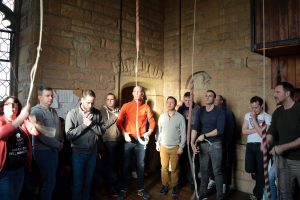
Whilst we take our ringing seriously, the attraction of FODS is provided by the social side and the hearty welcome everyone gets, whether they are on their twentieth tour or their first. Attendees bring along partners, spouses and friends who are not ringers, but who like to come along for the entertainment.
Advertised in our own Facebook and Yahoo mailing groups, these tours typically see 30 – 40 people attending. There are over 200 ringers in the Facebook group alone and FODS is international, with members from as far away as the USA and Australia turning up. In keeping with all bellringing groups, people mix from all ages from the youngsters all the way through to those over 70.
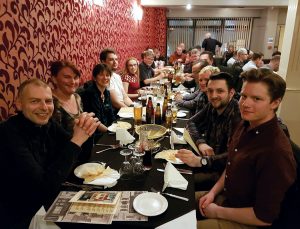
In the early days, when coming out was more of an ordeal in areas which still frowned on such things, people would find FODS a safe place to speak and act openly amongst like-minded people. It still is. It has even spawned romances, and we have couples who got together having met through FODS.
It is astonishing how addictive people find bellringing to be. You get to learn a new skill which matches co-ordination of the body with the mental challenges of remembering and executing the ringing orders. It is good exercise for those who like to flex their muscles on the bigger bells, and FODS has more than its fair share of these ‘tenor queens’.
There is great satisfaction to be had when you successfully steer your own bell cleanly and rhythmically through the planned interplay with the other bells, which rewards the concentration and effort. The result is a very public performance: the original heavy bell music you could say.
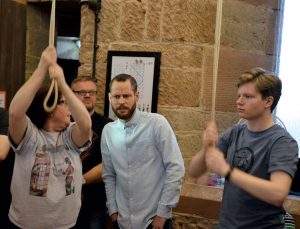
It also affords opportunities to travel around the country and discover hidden gems as the trainspotters amongst ringers tick off as many different bell towers as they can, made all the more interesting by their diversity.
Some bells are rung from the ground floor, others from a room high in the tower, and there is the excitement of exploring the private passageways in larger churches and cathedrals that the general public don’t get to see. Some towers have six bells while others (like St Martin’s) have as many as twelve. Each tower is different.
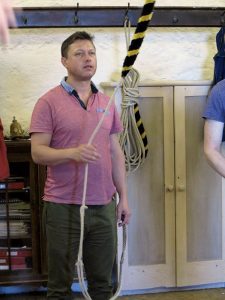
I have been ringing since I was thirteen, and I now teach bellringing in the City of London every Thursday evening on the famous Royal Jubilee Bells that you might have seen leading the Thames Diamond Jubilee Pageant in 2012 (See royaljubileebells.uk). Indeed, the first FOD I taught to ring on these bells was none other than John Barrowman.
I also co-ordinate the activities of FODS and we are always on the look out for new members and visitors. If this appeals to you (no pun intended) then contact me on [email protected], and I can include you in my classes or put you in touch with places to learn.
If you are a bellringer – or are interested in becoming one – you can contact the Friends of Dorothy Society on their Facebook page.



